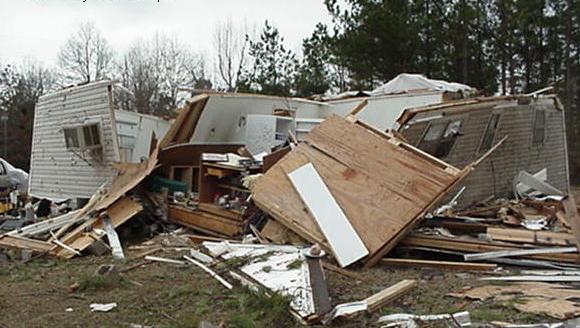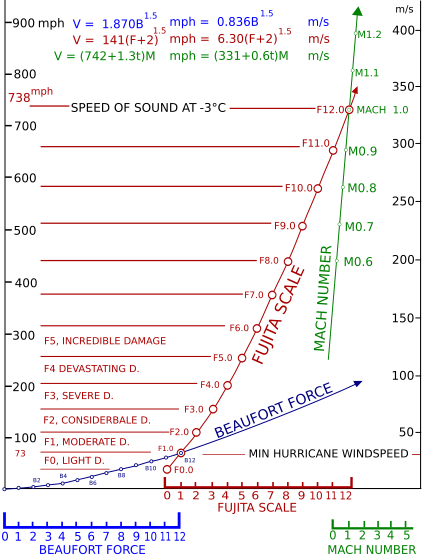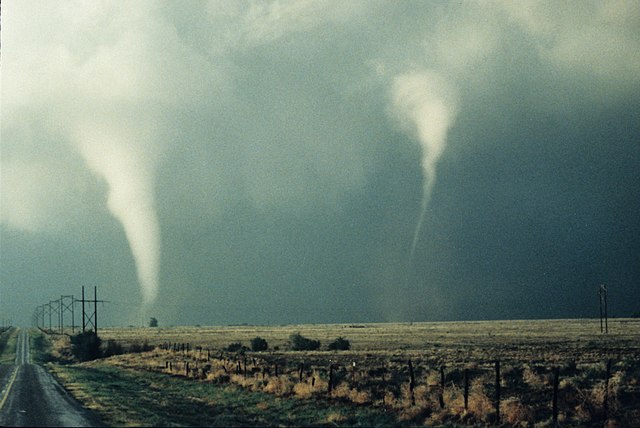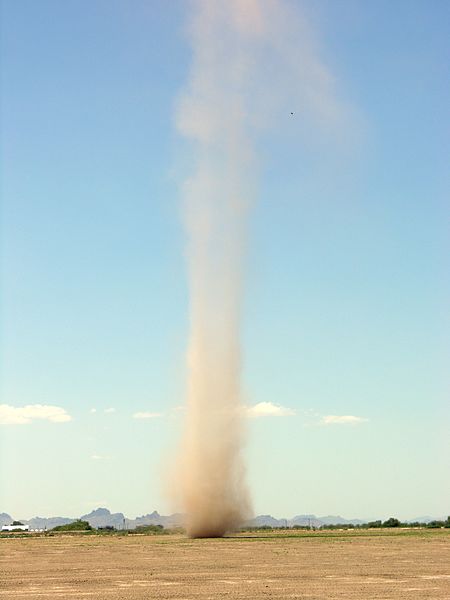We just learned that the F4 Tornado on the Fujita Scale is houses totally blown down, small buildings blown away and cars thrown through the air.
The highest level of damage is the F5 tornado - Incredible damage.
This is when houses are lifted up and carried away, large cars are flying through the air, and large steel and concrete buildings are badly damaged.
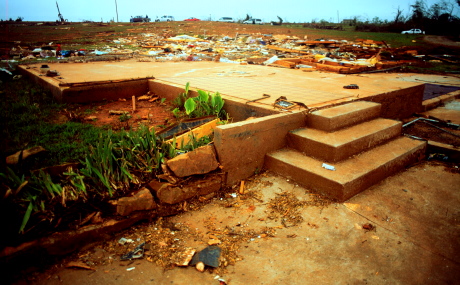
(from: wikipedia - fujita scale)
Kid Facts - Blast from the past: Stratocumulus Clouds


